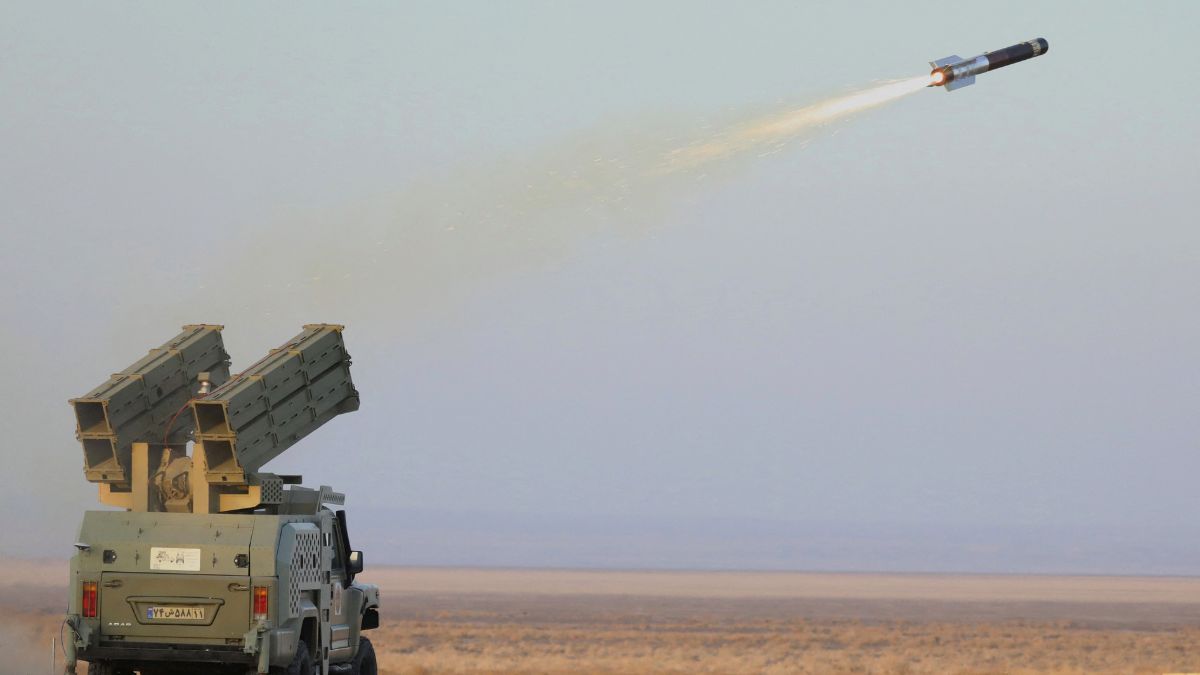Is Iran building nuclear missiles with a 3,000km range? Why?
The National Council of Resistance of Iran (NCRI), an exiled opposition group, has published a report alleging that the Iranian regime is secretly developing nuclear missiles capable of reaching Europe.
ALSO READ | Iran unveils long-range anti-warship missile with 1,000km range
The report claims these designs were provided by North Korea.
The Islamic Revolutionary Guard Corps (IRGC) is reportedly advancing its warhead programme at two facilities that appear to be communication satellite launch sites.
These sites are believed to be under the control of Iran’s nuclear weapons division, the Organisation for Advanced Defence Research (SPND).
What more details are available on these nuclear missiles? Why is Iran working on their development?
Here’s a look:
Why is Iran building the missiles?
The New York Post, citing the NCRI report, said that one of the sites identified as a nuclear weapons facility is the Shahrud missile complex, which is managed by Iran’s Organisation for Advanced Defence Research and the IRGC.
Notably, Tehran denies pursuing nuclear weapons and claims that its activities are limited to peaceful scientific research, Iran International reported. The US Central Intelligence Agency said last year that Iran has not yet made a decision to build a nuclear bomb. However, Israel believes that Tehran is actively seeking nuclear weapons.
Soona Samsami, the NCRI’s US representative, told The Telegraph UK that Iranian authorities are “masters of lies, deception and evasion. For over two decades, they have used negotiations and the West’s leniency as a means to advance their nuclear weapons programme, threatening global peace and stability.”
Impact Shorts
More Shorts“Tehran has never been as weak and vulnerable as it is today. The desperate Iranian regime is thus speeding up the development of nuclear weapons.
“Now is the time to hold the regime accountable for internal killings, regional warmongering, and nuclear weapons development,” she told the newspaper.
In recent weeks, Iran has conducted a series of military exercises, including drills aimed at securing key nuclear sites such as Natanz and Fordow.
Israeli officials continue to threaten military action against Iran’s nuclear programme. On Thursday, Omer Dostri, a spokesperson for Prime Minister Benjamin Netanyahu, told The Jerusalem Post that Israel prefers a diplomatic resolution but remains sceptical that Iran will comply.
“War is one way to achieve our objectives. If Iran halts its nuclear ambitions without an Israeli strike, fantastic,” he said.
“But we do not expect that to happen.”
ALSO READ | Why is Iran looking to change its capital?
While US President Donald Trump has suggested he may explore diplomatic options, Dostri made it clear that Israel is prepared to act alone if required.
“We’ll give it a chance, but the clock is ticking. If necessary, we will act – with or without American approval.”
What we know about the missiles
At the first site, which is called the Shahrud missile facility and located about 35km from the city of the same name, experts from SPND and the IRGC Aerospace Force have been working on developing a nuclear warhead capable of being mounted onto a Ghaem-100, a solid-fuelled rocket with a range of 3,000km, The Telegraph UK reported.
Equipping such a missile with a nuclear warhead would enable Iran to target parts of Europe, including Greece, as well as regional adversaries such as Israel.
According to the British daily, three successful rocket launches have taken place so far, with a test for the more advanced Ghaem-105 missile scheduled in the coming months.
Another facility, situated approximately 43 miles southeast of Semnan, is believed to be producing Simorgh missiles based on North Korean designs, resembling the 18-metre-tall UNHA-1 rocket. Much of the development at this site occurs underground to evade intelligence detection, with six additional structures built since 2005, the newspaper reported.
To further hide its true purpose, the regime has named the facility the Imam Khomeini site, presenting it as part of the country’s space programme, while it is in fact being used for warhead testing.
ALSO READ | How Iran’s hijab ‘treatment clinics’ use mental illness to control women
Images released by the NCRI reveal a massive excavation in the northeastern section of the base in 2019, followed by the placement of concrete foundations.
Missiles with this range would grant Iran the capability to launch nuclear strikes deep into Europe, reaching countries such as Greece, while also posing a direct threat to Israel, Tehran’s long-standing foe.
There have been at least three successful launches of the missile, which the NCRI claims “enhances the regime’s capability to deploy nuclear weapons.”
Both locations are classified as military sites and operate under strict security measures to prevent unauthorised access or disclosure of ongoing activities.
According to the newspaper, workers commute in private vehicles from nearby cities, including Tehran, before being transported by IRGC personnel via bus from a checkpoint several miles away as an additional security precaution.
The NCRI claims that the SPND’s activities, particularly within its geophysics department, which is responsible for monitoring underground explosions linked to nuclear warhead production, have strengthened.


)

)
)
)
)
)
)
)
)



